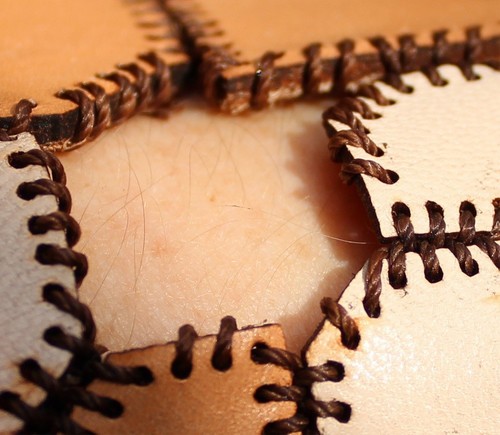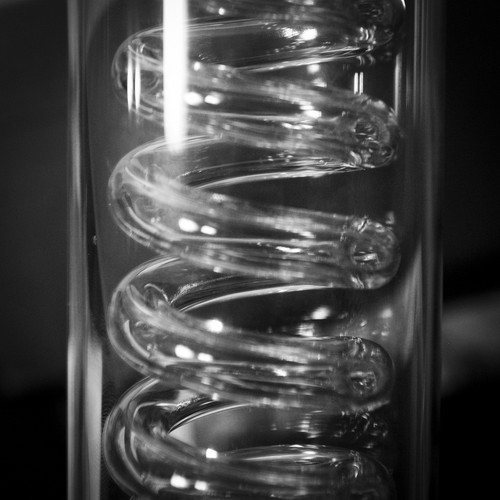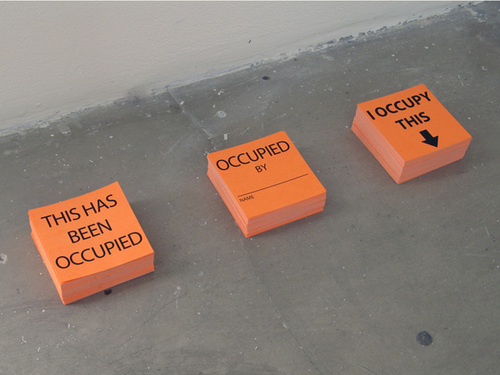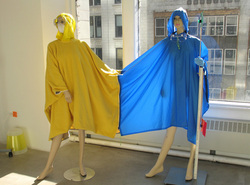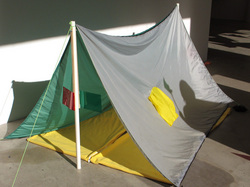Tele Vision Personalities (original) (raw)
Art Tue Jun 19 2012
It's not that traditional architectural practices lack a focus on design and the execution of ideas. But after spending time in Tele Vision, the School of the Art Institute's final graduate exhibition featuring works from students in the Architecture, Interior Architecture, Designed Objects, and Fashion departments, it is apparent that like other departments in the school, SAIC students value the complete synthesis of the tangible and conceptual.
Image by Shelley Getzendanner
Every graduating student must complete a thesis show, but it is this year's theme and curatorial touch that separates this current exhibition from previous shows. The title of the exhibition, Tele Vision, is a play on the word "television" and as a whole, the works look at issues from a broader focus. Each work addresses ideas of narrative imagery and the exhibition explores the ways in which they fit within the realm of storytelling.
"There's a consciousness to the show. There's a politness to the show," began Caroline Linder, SAIC faculty member, partner in design brand ODLCO, and one of the co-curators for Tele Vision. "They're saying, 'You're the audience. You make up your minds.'" All of the works are "televised," but it is up to the audience to decipher what they are seeing and determine how it makes them feel.
In The Things We See, Mig Rod (Master of Design in Designed Objects) created a series of stations that allow viewers to inhale different created scents. "I stumbled upon the five tastes and started thinking about smell and how perception changes so much," Rod said. "Smell has such a strong impact on our behavior or our memory."
Image by Mig Rod
The study and examination of smell in visual arts and designed objects is one area that is largely overlooked. In The Things We See, Rod created a work that examines the different approaches to how we think about smell. Rather than just playing with ideas of perfume, Rod chose different layers of smell that allow the audience to think about what an object is and how we can be connected to such objects through the power of scent.
Rather than designing objects specifically for the sense of smell, to create his work, Rod learned the chemistry of scents and looked at everyday common objects to add layers of scent. Using a simple, modified distillation system, aromas were created and the objects like napkins were infused with scents ranging from "salt and lime" to "bullets."
The latter proved to be at once problematic and deeply affecting for the thesis exhibition. The scent was created using decayed blood. In order to be included, the original overpowering scent had to be "turned down." And yet, even the softer scent still resonated with audiences. Rod recounted a story of a photographer who said that the smell brought him back to the hospitals in which he photographed children harmed by neighborhood violence. "Even though there are scientific reactions to the way we smell," said Rod, "we all have our own different memories that come up based on what we smell."
In another timely project, Tools for Protestors, Judith Lambotte (Master of Design in Designed Objects) designed objects that addressed the realities and needs of contemporary protesters. Lambotte had followed and supported the actions of the Occupy movement, but the creation of Tools for Protestors escalated near the time Occupy Wall Street encampments were being forced down. "I was inspired by the Occupy movement as a whole and I saw a way to unify the message in a way that was not coming across to the public," Lambotte said.
One of the strongest pieces, a convertible poncho that can multi-function as a sleeping bag, cushion, and tent (among other uses) was even tested as a prototype during the NATO protests. Although the work is the first that she's designed for the specific purpose as a resource for protesters, Lambotte will make the design open source so all "occupiers" can make their own. "It's important to have resources and messaging tools that tell people what's going on in real time," she said.
--
Tele Vision runs through July 21 and is located in Sullivan Galleries (33 South State).
